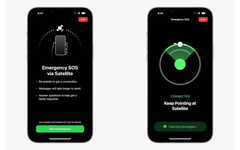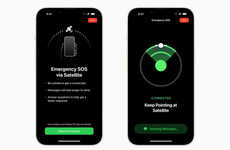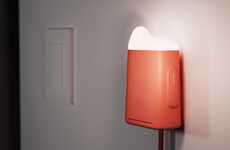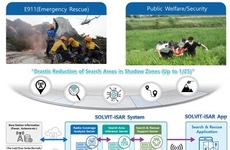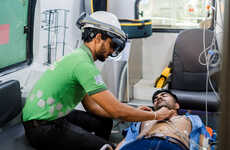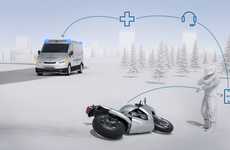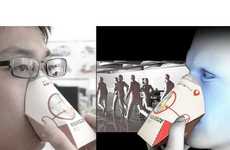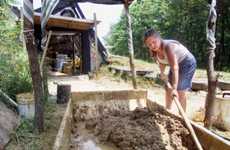
How Your Mobile Can Save Your Life
Juan Rodriguez Villa — January 28, 2007 — Tech
References: dmnnewswire.digitalmedianet
The European Union has teamed the French mobile company Swapcom in order to develop a project called MARIUS. This project is already a reality, and will allow emergency crews to broadcast SMS (Short Message Service) to all the electronic devices of an area in order to coordinate help and rescue services in an emergency situation. Even if the local network is not working, thes system will allow the SMS broadcasted from the helicopter to be received in the designated area.
But this project is not something to come. It has already been successfully tested and will be launched in Valencia, in July 2007, during the celebration of the Louis Vuiton's 2007 America's Cup Finals.
The biggest innovation in this project is the simultaneous utilisation of the following elements in a potential emergency situation:
-- An airbone segment equipped with EO/IR sensor, GSM detection & location sensor, SMS broadcast capability, a data link to the ground station and a radio system
-- A mobile crisis management system
-- The ground sensors (cameras) and their specific data link
-- A micro-drone to demonstrate airbone surveillance functions in case of disaster
-- The deployable wireless communications network
The French company Swapcom has been chosen by the European Commission because of their high level of technology development, and their specialised skills in the use of that technology.
I am sure after July 2007, this technology already tested and proved successful will spread out to many countries and areas so whenever an emergency situation happens, citizens will be able to receive SMS in their mobile devices in order to coordinate rescue and help.
But this project is not something to come. It has already been successfully tested and will be launched in Valencia, in July 2007, during the celebration of the Louis Vuiton's 2007 America's Cup Finals.
The biggest innovation in this project is the simultaneous utilisation of the following elements in a potential emergency situation:
-- An airbone segment equipped with EO/IR sensor, GSM detection & location sensor, SMS broadcast capability, a data link to the ground station and a radio system
-- A mobile crisis management system
-- The ground sensors (cameras) and their specific data link
-- A micro-drone to demonstrate airbone surveillance functions in case of disaster
-- The deployable wireless communications network
The French company Swapcom has been chosen by the European Commission because of their high level of technology development, and their specialised skills in the use of that technology.
I am sure after July 2007, this technology already tested and proved successful will spread out to many countries and areas so whenever an emergency situation happens, citizens will be able to receive SMS in their mobile devices in order to coordinate rescue and help.
Trend Themes
1. Emergency SMS Broadcasting - Utilizing SMS broadcast technology to coordinate help and rescue services in emergency situations.
2. Airborne Surveillance Technology - Developing EO/IR sensors and GSM detection systems for airborne surveillance in disaster scenarios.
3. Deployable Wireless Communications Network - Creating a portable and adaptable wireless communications network for emergency response teams.
Industry Implications
1. Mobile Technology - Exploring opportunities to enhance mobile devices for emergency communication and coordination.
2. Surveillance Technology - Advancing the development of EO/IR sensors and GSM detection systems for improved disaster response.
3. Wireless Telecommunications - Innovating portable and adaptable wireless communications networks for emergency services.
2.4
Score
Popularity
Activity
Freshness

